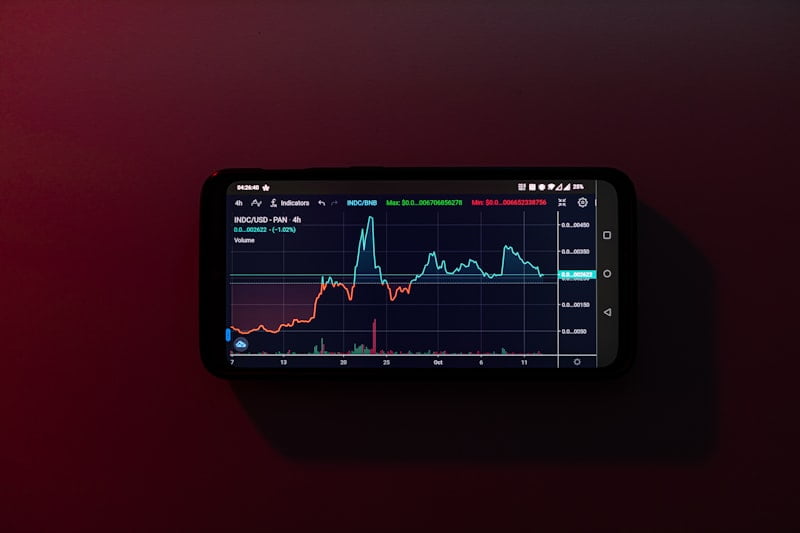What Are the Differences Between Public and Private Blockchains?

On the flip side, private blockchains resemble exclusive members-only clubs. They are permissioned networks where access and participation are restricted to a predefined group of users or entities. Think of them as secure corporate intranets where confidentiality and control are prioritized over transparency. Businesses and organizations often prefer private blockchains for their ability to regulate transactions, manage permissions, and maintain higher efficiency within closed ecosystems.
One key difference lies in their consensus mechanisms. Public blockchains typically use consensus protocols like Proof of Work (PoW) or Proof of Stake (PoS), where participants compete to validate transactions and secure the network. In contrast, private blockchains may utilize more efficient consensus algorithms such as Practical Byzantine Fault Tolerance (PBFT) or Raft, tailored to ensure quick validation and consensus among known participants.
Security and scalability also set them apart. Public blockchains prioritize robust security through cryptographic techniques and consensus mechanisms that prevent fraudulent activities without relying on a central authority. However, they often face scalability challenges due to the extensive computational power required for consensus.
Private blockchains, while sacrificing some decentralization, excel in scalability and transaction speed. They can handle a large volume of transactions efficiently since they operate within a controlled environment where participants trust each other’s identities and intentions.
Whether you prefer the openness and transparency of public blockchains or the control and efficiency of private blockchains depends on your specific use case and priorities. Understanding these fundamental differences is crucial for businesses, developers, and enthusiasts navigating the ever-evolving landscape of blockchain technology.
Decentralization vs. Control: Unpacking Public and Private Blockchains
On the other hand, private blockchains offer controlled access and permissions, typically managed by a central entity or consortium. They prioritize efficiency and privacy, making them suitable for businesses and organizations seeking to leverage blockchain technology for internal operations or specific applications. By restricting access, private blockchains can maintain faster transaction speeds and protect sensitive data within a closed ecosystem.
The distinction between these blockchain types underscores their intended use cases and fundamental philosophies. Public blockchains emphasize openness, censorship resistance, and community governance, aligning with ideals of decentralization championed by blockchain pioneers. In contrast, private blockchains prioritize enterprise needs for scalability, compliance, and data control, appealing to industries such as finance, healthcare, and supply chain management.
Navigating the trade-offs between decentralization and control is crucial for stakeholders evaluating blockchain solutions. Public blockchains offer robust security through decentralization but may face scalability challenges and regulatory scrutiny. Private blockchains provide tailored solutions with enhanced efficiency and data privacy but sacrifice some of the foundational principles of decentralization.
As blockchain technology continues to evolve, understanding the nuances between public and private blockchains becomes increasingly vital. Whether fostering global financial inclusion or optimizing enterprise workflows, the choice between decentralization and control shapes the future landscape of blockchain applications across industries.
Transparency vs. Privacy: Navigating Public and Private Blockchain Distinctions
On the other hand, privacy-focused blockchains emphasize anonymity and confidentiality. These private or permissioned blockchains restrict access to transaction details to authorized participants only. They employ techniques like zero-knowledge proofs or ring signatures to obscure transactional data while still ensuring validity and security.
Navigating between public and private blockchain distinctions depends largely on the use case and desired outcomes. Public blockchains are ideal for applications requiring transparency, such as financial transactions or supply chain management, where stakeholders benefit from openly accessible data. Conversely, private blockchains are suited for industries like healthcare or government services, where data confidentiality is paramount but operational efficiency through blockchain technology is still desirable.
Analogously, comparing transparency to a clear glass window and privacy to a closed curtain illustrates this distinction vividly. Just as a clear glass window allows outsiders to see inside, public blockchains offer visibility into transactions. Conversely, a closed curtain provides privacy by concealing what happens behind it, akin to the confidentiality ensured by private blockchains.
While both transparency and privacy are essential facets of blockchain technology, choosing between public and private blockchains depends on specific needs for openness or confidentiality. Understanding these distinctions empowers businesses and individuals to harness blockchain’s transformative potential effectively, ensuring data security and operational efficiency in diverse applications.
Security Showdown: Comparing Public and Private Blockchain Protocols
Public blockchains, such as Bitcoin and Ethereum, operate on a decentralized network accessible to anyone. They prioritize transparency and security through consensus mechanisms like Proof of Work (PoW) or Proof of Stake (PoS). These protocols ensure that transactions are validated by a network of nodes, guaranteeing immutability and resistance to censorship. Users on public blockchains can engage in transactions anonymously, leveraging the network’s open nature for activities ranging from financial transfers to smart contracts and decentralized applications (dApps).
Conversely, private blockchains restrict access to authorized participants only. They maintain centralized control over network operations, allowing organizations to manage permissions and data visibility according to specific requirements. Private blockchain protocols, such as Hyperledger Fabric and R3 Corda, emphasize privacy and scalability for enterprise applications. They integrate with existing business systems, offering tailored solutions for industries like finance, healthcare, and supply chain management. These platforms ensure regulatory compliance and facilitate efficient data sharing among trusted parties while maintaining a higher degree of control over governance and network operations.

As blockchain technology continues to evolve, both public and private protocols play crucial roles in shaping the future of digital transactions and decentralized applications. Understanding their distinctions helps stakeholders navigate the complex landscape of blockchain adoption and innovation.
Governance Galore: Understanding Public and Private Blockchain Management
Blockchain technology has revolutionized various sectors, offering transparency, security, and efficiency. At its core, blockchain relies on a decentralized ledger system where transactions are recorded across a network of computers. Governance in blockchain refers to the mechanisms and processes that ensure the network operates smoothly and securely.

On the other hand, private blockchains are permissioned networks where access and participation are restricted to specific entities or nodes. These blockchains are often used by enterprises or consortiums seeking to maintain control over who can join the network and validate transactions. Governance in private blockchains is more centralized compared to public blockchains, with designated administrators or governing bodies making decisions regarding network rules, upgrades, and transaction validations. This centralized governance model provides efficiency and faster decision-making but may sacrifice some of the decentralization and transparency found in public blockchains.
Understanding the nuances between public and private blockchain governance is crucial for businesses and developers looking to leverage blockchain technology. While public blockchains offer openness and community-driven decision-making, private blockchains provide control and scalability tailored to specific organizational needs.
Whether you’re navigating the transparency of public blockchains or the control of private blockchains, understanding governance principles is key to harnessing the full potential of blockchain technology for your business or project.
Scalability Wars: Performance Contrasts Between Public and Private Blockchains
Imagine public blockchains as bustling cities where every transaction must be verified by a vast network of nodes. While this democratic validation ensures security and trust, it also slows down transaction times during peak usage, akin to rush hour traffic snarls. This bottleneck hampers scalability, limiting the number of transactions per second and driving up fees.
Private blockchains, on the other hand, operate more like exclusive clubs, where access and validation are restricted to authorized members or consortiums. This controlled environment enhances scalability by minimizing the number of nodes needed for consensus, thereby boosting transaction speeds and reducing costs. Picture it as navigating smoothly through a well-managed toll lane rather than negotiating crowded city streets.
However, this streamlined performance comes at a trade-off with decentralization and censorship resistance, core tenets of public blockchains. Private blockchains sacrifice some of these virtues for efficiency and scalability, catering primarily to enterprises seeking faster, cost-effective transaction solutions within a closed ecosystem.
In the scalability wars, both public and private blockchains vie for dominance, each offering distinct advantages suited to different use cases. Public chains strive for inclusivity and resilience against censorship, appealing to decentralized applications (dApps) and open finance. Meanwhile, private chains court businesses with promises of faster, cheaper transactions and tailored governance.
As blockchain technology evolves, the quest for scalability remains a dynamic frontier, where innovation strives to reconcile efficiency with decentralization. Whether in the public domain fostering global trust or within private spheres optimizing corporate operations, scalability defines the competitive edge in the blockchain arena.
